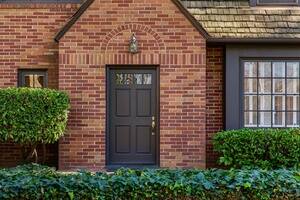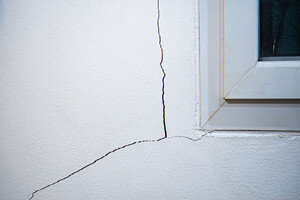Foundation issues are a common problem for homeowners, and they can range from minor to major. Minor foundation problems may not cause significant damage to your home, while major foundation problems can lead to structural damage and even safety concerns.
Let’s explore the difference between major and minor foundation repair issues and provide some tips for avoiding foundation problems.
Minor Foundation Problems

Minor foundation problems are typically easy to repair and can be resolved quickly. Some common examples of minor foundation issues include cracks in walls, floors, or ceilings, doors or windows that don’t close properly, or uneven floors. These issues are often caused by minor settling or shifting of the foundation due to changes in soil conditions, temperature changes, or minor earthquakes.
One way to address minor foundation problems is to use a foundation repair product. There are various types of foundation repair products available, such as epoxy or polyurethane foam, that can be injected into the cracks to fill them and prevent further damage. It is important to address minor foundation problems as soon as possible to prevent them from becoming major issues.
Major Foundation Problems
Major foundation problems are much more severe and can lead to significant structural damage to your home. These issues are often caused by major settling or shifting of the foundation due to poor soil conditions, drainage issues, or other factors. Some common examples of major foundation problems include significant cracks in walls or floors, bulging walls, or sinking or settling foundations.
If you notice any of these signs, it is important to contact a foundation specialist as soon as possible. They can assess the severity of the issue and recommend the best course of action, which may involve foundation underpinning or replacement.
Tips for Avoiding Foundation Problems
 While foundation problems can occur for a variety of reasons, there are several steps you can take to prevent them from happening in the first place. Here are some tips for avoiding foundation problems:
While foundation problems can occur for a variety of reasons, there are several steps you can take to prevent them from happening in the first place. Here are some tips for avoiding foundation problems:
Inspect Your Foundation
Regularly inspect your foundation for signs of damage or cracking. If you notice any issues, address them as soon as possible to prevent them from becoming major problems.
Set Up and Maintain a Proper Drainage System
Poor drainage can lead to foundation issues by causing soil erosion or excess water buildup. Make sure your gutters are clear of debris and that water is directed away from your foundation.
Check the Slope of Your Yard
Your yard should slope away from your home to prevent water from collecting near your foundation. If you notice that your yard slopes toward your home, consider regrading the area to improve drainage.
Contact the Foundation Specialists at Dirt Connections
 Foundation problems can range from minor to major, and it is important to address them as soon as possible to prevent them from becoming more severe. By following the tips outlined above, you can help prevent foundation problems from occurring and keep your home safe and structurally sound for years to come.
Foundation problems can range from minor to major, and it is important to address them as soon as possible to prevent them from becoming more severe. By following the tips outlined above, you can help prevent foundation problems from occurring and keep your home safe and structurally sound for years to come.
If you notice any signs of foundation problems, contact a foundation specialist at Dirt Connections. They can assess the issue and recommend the best course of action to repair the problem.


